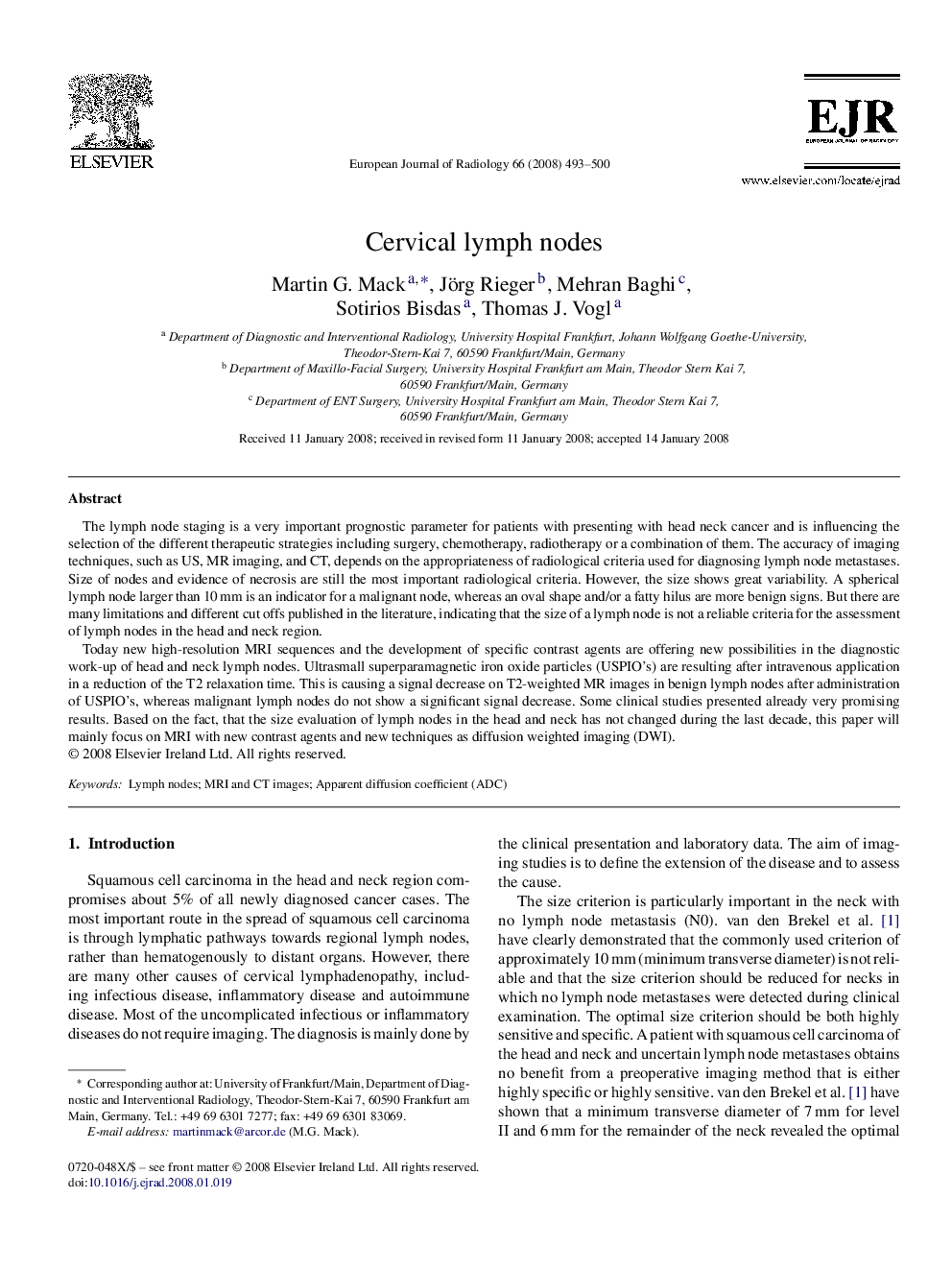| Article ID | Journal | Published Year | Pages | File Type |
|---|---|---|---|---|
| 4227907 | European Journal of Radiology | 2008 | 8 Pages |
The lymph node staging is a very important prognostic parameter for patients with presenting with head neck cancer and is influencing the selection of the different therapeutic strategies including surgery, chemotherapy, radiotherapy or a combination of them. The accuracy of imaging techniques, such as US, MR imaging, and CT, depends on the appropriateness of radiological criteria used for diagnosing lymph node metastases. Size of nodes and evidence of necrosis are still the most important radiological criteria. However, the size shows great variability. A spherical lymph node larger than 10 mm is an indicator for a malignant node, whereas an oval shape and/or a fatty hilus are more benign signs. But there are many limitations and different cut offs published in the literature, indicating that the size of a lymph node is not a reliable criteria for the assessment of lymph nodes in the head and neck region.Today new high-resolution MRI sequences and the development of specific contrast agents are offering new possibilities in the diagnostic work-up of head and neck lymph nodes. Ultrasmall superparamagnetic iron oxide particles (USPIO's) are resulting after intravenous application in a reduction of the T2 relaxation time. This is causing a signal decrease on T2-weighted MR images in benign lymph nodes after administration of USPIO's, whereas malignant lymph nodes do not show a significant signal decrease. Some clinical studies presented already very promising results. Based on the fact, that the size evaluation of lymph nodes in the head and neck has not changed during the last decade, this paper will mainly focus on MRI with new contrast agents and new techniques as diffusion weighted imaging (DWI).
